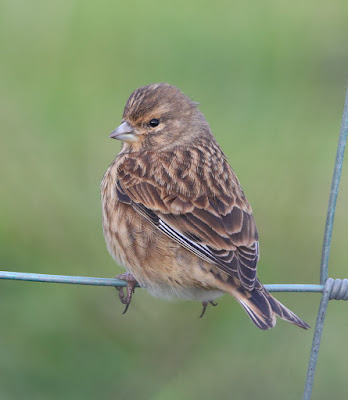At the end of December the BTO encourage bird ringers to renew their ringing permit by submitting returns and confirming they are fit to continue ringing for the coming year. Fit in mind and body for now, but it gets more difficult each year, especially those 4am summer starts or scrambling up and down a quarry face to catch Sand Martins.
So now my permit for 2018 just arrived hot from the Canon Pixma. This rather exclusive piece of paper will reside in the glove box of the car for the inevitable, often puzzled but mostly interested, occasionally irate questions from onlookers.
Bird Ringing Permit
“Why are you trudging through that muddy field in the middle of a cold, grey January morning picking up wild birds from that funny looking net? Are you harming them? Are you catching them to eat ?” Then try explaining how the vital scientific work is also rewarding enjoyment, see the look on their face as you show the rings, pliers, scales and other equipment, and then watch their reaction as the tiny Linnet they hadn’t spotted in your hand is released to fly away.
Yes, each UK bird ringer must have a licence to capture and ring birds. They pay yearly for the privilege of being involved in the national ringing scheme, as well as buying their own equipment and the rings they use; unless of course they are fortunate in having sponsorship or a rich benefactor. A busy day of ringing 100 small birds costs about £25 for the “A” sized rings that passerines take. Donations readily accepted or just send a sort code. I’ll do the rest.
A check of my personal ringing data on our Fylde Ringing Group database showed I processed 516 birds during 2017. An average of ten a week for a year is pretty pathetic by past performance of almost 25,000 birds since 1985 thanks to last year’s foul weather of summer, autumn, and early winter. But there’s a reasonable mix of species in that 516 and as it’s raining and snowing today, chance to recall a few of the highlights, guess where we went wrong and surmise how to be a ringing superstar in 2018.
During 2017 Oakenclough near Garstang proved the most productive of sites and where ringing with pal Andy I processed 268 birds. Most encountered species was Goldfinch at 57 and Lesser Redpoll at 47 followed by 22 Redwings ringed during October and early November.
In amongst the dross of tits and wrens that ringers choose to forget were singles of Sparrowhawk and Redstart; and always welcome, a couple of Tree Pipits, all worthy of bold lettering as is the custom of bird blogs in identifying the more exciting species.
For the moment we have given up on Oakenclough, a very finch orientated but also weather dependent site where autumn migration hardly took place when many northern finches chose to fly over Yorkshire, Humberside and SE England on their way to the Continent rather than chance the series of storms that hit the West Coast. With luck there will be a strong movement back north in a few weeks’ time when we can return for Redpolls and maybe even Siskins.
The weather also limited our visits to the Cockerham Sand Martin colony at the aforesaid quarry. Two visits only during the summer months resulted in my poor number of 33 Sand Martins, just half the full total shared with Andy. Normally we would hope to get in four or maybe five visits to measure breeding success but it wasn’t to be.
A few summer visits to Marton Mere realised 28 new birds including a small number of Reed Warblers and a couple of the recent colonist and now proved breeding Cetti’s Warblers.
Regular readers will be familiar with, probably even bored by the blog’s continual mention of Project Linnet. Suffice to say that it is a very worthwhile project, so much so that during the year we had guest appearances from other ringers keen to get their hands on Red-listed Linnets. There was the added bonus last year of a single Stonechat to add to the Linnets and a handful of Goldfinches.
Of 70 birds ringed in my garden on lazy days, 51 were Goldfinches and just 3 House Sparrows. There are no prizes for guessing the most common bird in this part of Lancashire and probably the whole of the UK. How times change.
Here’s hoping for better ringing weather in 2018.
Linking today to Anni's Blog , Eileen's Saturday Blog and Stewart's World Bird Wednesday.
Linking today to Anni's Blog , Eileen's Saturday Blog and Stewart's World Bird Wednesday.





























































.jpg)












